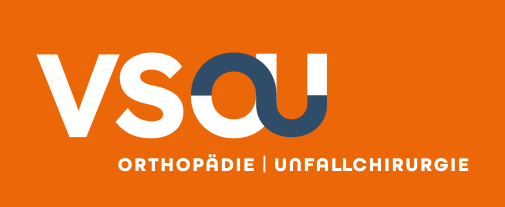Ihre Suche ergab 2 Treffer
Der perkutane Fixateur interne an der Wirbelsäule
Zusammenfassung
Hintergrund: Die minimalinvasive Stabilisierung von Wirbelsäulenbrüchen setzt sich zunehmend durch. Insbesondere aufgrund der vermeintlich einfacheren Anwendbarkeit wird der Eingriff breitflächig durchgeführt. Die Komplikationsrate und insbesondere spezifische Komplikationen der „Hardware“ werden anhand unserer ersten 670 Anwendungen dargestellt.
Material und Methoden: Von 2010–14 wurden 670 Stabilisierungen an der WS in minimalinvasiver Technik durchgeführt, davon 118 zementaugmentiert. Komplikationen werden unterteilt in intraoperative, postoperative und implantatspezifische Komplikationen. Des Weiteren werden spezielle Komplikationen der neuen Technik sowie Komplikationen der Hardware beschrieben. Ein Vergleich wird mit der Komplikationsrate des offenen Vorgehens geführt (MCS-II-Studie der DGU ). Die Daten wurden prospektiv erfasst
Ergebnisse: Insgesamt traten 7 revisionspflichtige Infektionen auf. Alle 7 konnten saniert werden ohne ME. An implantatspezifischen Komplikationen kam es 5-mal zur Auswanderung/Lockerung der Madenschraube, 2-mal musste frühzeitig revidiert werden bei Repositionsverlust, einmal als Zufallsbefund vor ME. Insgesamt besteht somit eine Komplikationsrate von 2,1% für postoperative Komplikationen (DGU MCS II: 9,4%). Intraoperative Komplikationen wie Blutung, Schraubenfehllage und Konversion zum offenen Verfahren (MCS 2 7,7%) wurden bei uns nicht mehr beobachtet.
Schlussfolgerung: Insgesamt ist die perkutane Frakturstabilisierung ein sehr sicheres Verfahren. Die Komplikationsrate ist im allgemeinen niedriger als im offenen Vorgehen. Spezifische Komplikationen des neuen Verfahrens müssen noch Beachtung finden und sind vor allem hardwarebedingt.
Summary
Background: Minimally invasive stabilization techniques (MISS) are gaining importance in the treatment of spinal fractures. The purpose of this investigation was to evaluate the complication rate of this new procedure. Especially the complications of the hardware (screws and rods) will be illustrated.
Methods: In the years 2010–14 a total of 670 patients have been stabilized with MISS techniques in spinal fractures. In 118 patients of this collective we used cement augmentation of the screws in instable osteoporotic fractures. The complications have been divided in intraoperative, postoperative and implant-related complications. Data collection has been prospective. Especially complications and hardware problems of the new technique have been described. The results have been compared with the complications results in the open procedure technique of the MCS-2-study from the German Society of Trauma surgery (DGU).
Results: We found 7 patients with infection and operative revision. In no case it was necessary to remove the implant. In 5 patients we saw loosening of the set screws. In 2 cases there was a loss of reduction and gaining kyphosis, it was necessary to indicate an early revision. In one case it was an incidental finding. In total the complication rate of intra- and postoperative complications is 2.1%. Compared to the study group, the rate in the open procedure is 9.4%. Intraoperative bleeding and conversion to open procedure was not observed. There was no revision necessary because of mal positioning of a pedicle screw.
Conclusion: The percutaneous stabilization technique of spinal fractures is a safe procedure. In general the complication rate is less than in the open techniques. We found implant-related complications such as loosening of the set screws. This should be recognized and improved from the companies.
Wirbelkörperfrakturen im Alter, minimalinvasive Behandlungsstrategien
Zusammenfassung: Wirbelkörperfrakturen im Alter haben schon zahlenmäßig einen hohen Stellenwert und erfahren momentan gerade durch die Entwicklung neuer Behandlungsmethoden eine lebhafte Diskussion. Durch den Vormarsch minimalinvasiver Techniken können auch ältere Patienten suffizient operativ versorgt und dadurch rascher mobilisiert werden. Nicht immer ist die alleinige Zementaugmentation ausreichend, bei adäquatem Trauma und entsprechender Instabilität ist eine dorsale Instrumentierung erforderlich. Auch in diesen Fällen können moderne Verfahren wie die zementaugmentierte Pedikelschraube oder die perkutane Technik für den Patienten vorteilhaft zum Einsatz kommen.
Abstract: Vertebral fractures of the elderly show a high incidence and are actively discussed as there is a large variety of new operative techniques. Minimal invasive techniques allow fast and less incriminating but sufficient operative treatments of the elderly so that they are earlier mobilized. Vertebroplasty and kyphoplasty can be used in simple lesions, they are complemented in higher instabilities by internal fixators. The pedicle screws can be inserted using a percutaneous technique and they may be easily cement augmented due to new cannulated and fenestrated designs. If applied using a differentiated indication, these new techniques are advantageous for our elderly patients.
